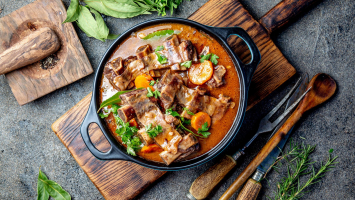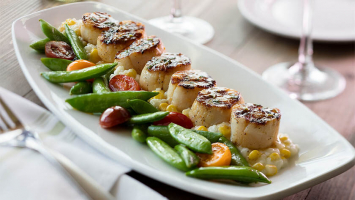Top 10 Best French Foods
Simple combinations of rich, natural flavors are used in French cuisine to create unforgettable, internationally renowned dishes. Indeed, French cuisine is so ... read more...well-liked around the world that it was added to UNESCO's list of intangible cultural heritage in 2010. For many people, wine and cheese are their first introduction to French cuisine. There are plenty of delicious pairings to choose from, from brie and Burgundy to camembert and Chardonnay. In addition to the cheeseboard, however, there's a whole world of French cuisine to discover. Here's the list of the top French foods you must try once you are in France. Bon appetite!
-
This is a classic French soup made with onions and beef stock, usually topped with croutons and melted cheese. This was traditionally a peasant dish dating back to Roman times, though the current version dates from the 18th century.
Caramelizing the onions is the first step in making Soupe à l’oignon. This step can take a few hours, depending on the type of onions and the amount of heat used, before the onions reach the desired consistency and color. When the onions are fully caramelized, liquid — usually water or beef broth — is added, and once everything is brought to a heavy boil, the heat is turned down, and the soup is left to simmer.
Flour can be added to the broth before or after the liquid is added to thicken it. Dry bread or toasted croutons are sprinkled on top of the finished soup in individual crock pots. For the gratinated version, a generous amount of grated cheese — preferably Gruyère or Comté — is spread over the bread and placed under the broiler to melt the cheese and create a beautiful golden crust.
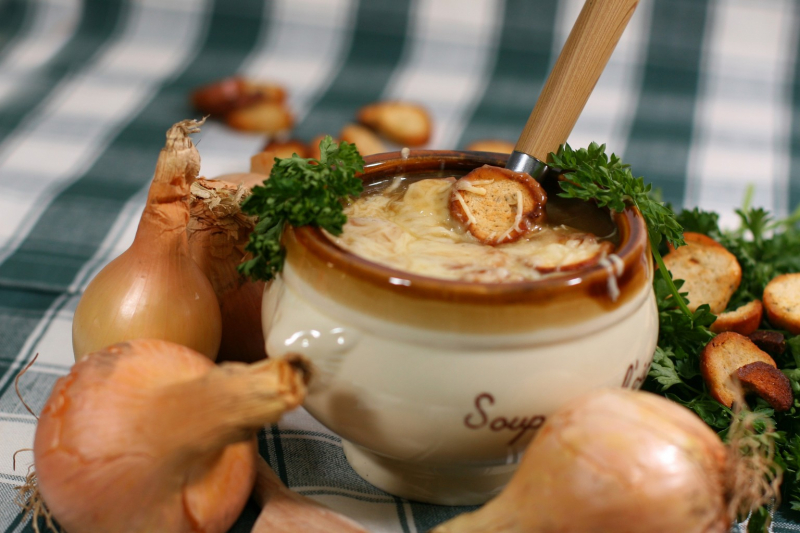
http://www.pratique.fr/soupe-a-oignon.html 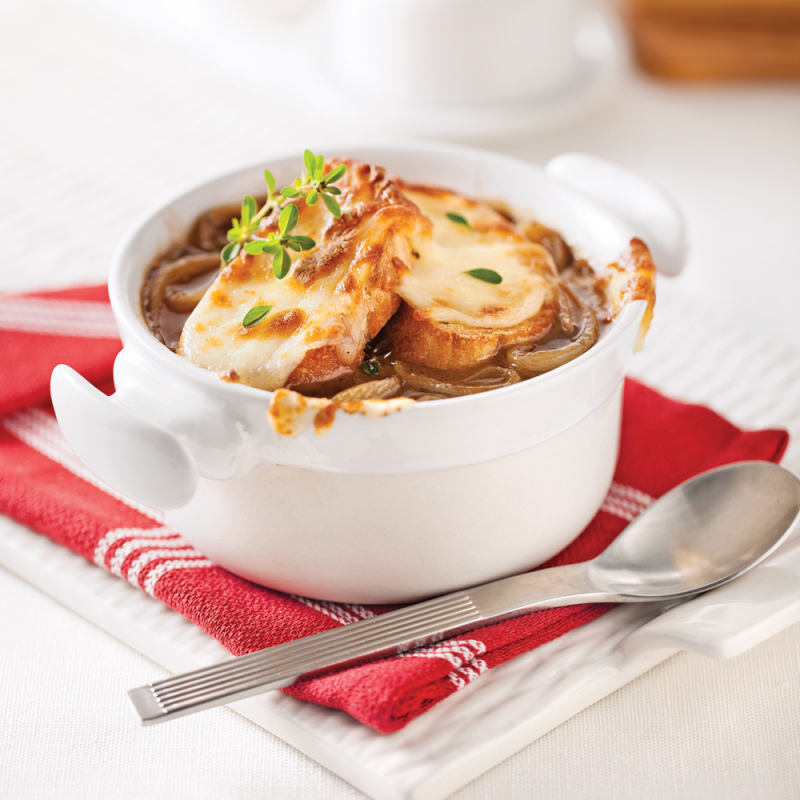
http://www.pratico-pratiques.com -
Julia Child popularized this classic French dish, which became one of her signature dishes. Chicken is braised with wine, mushrooms, salty pork or bacon (lardons), mushrooms, onions, garlic, and occasionally a splash of brandy in this dish.
Despite the fact that the name means "rooster in wine," and the braising method is ideal for tougher birds, the recipe usually calls for chicken or capon. Although regional variations of the dish exist across France that use local wines, the wine is typically Burgundy.
These include coq au vin jaune (Jura), coq au Riesling (Alsace), and coq au pourpre (Beaujolais nouveau). Believe it or not, there’s even a coq au Champagne (Champagne).
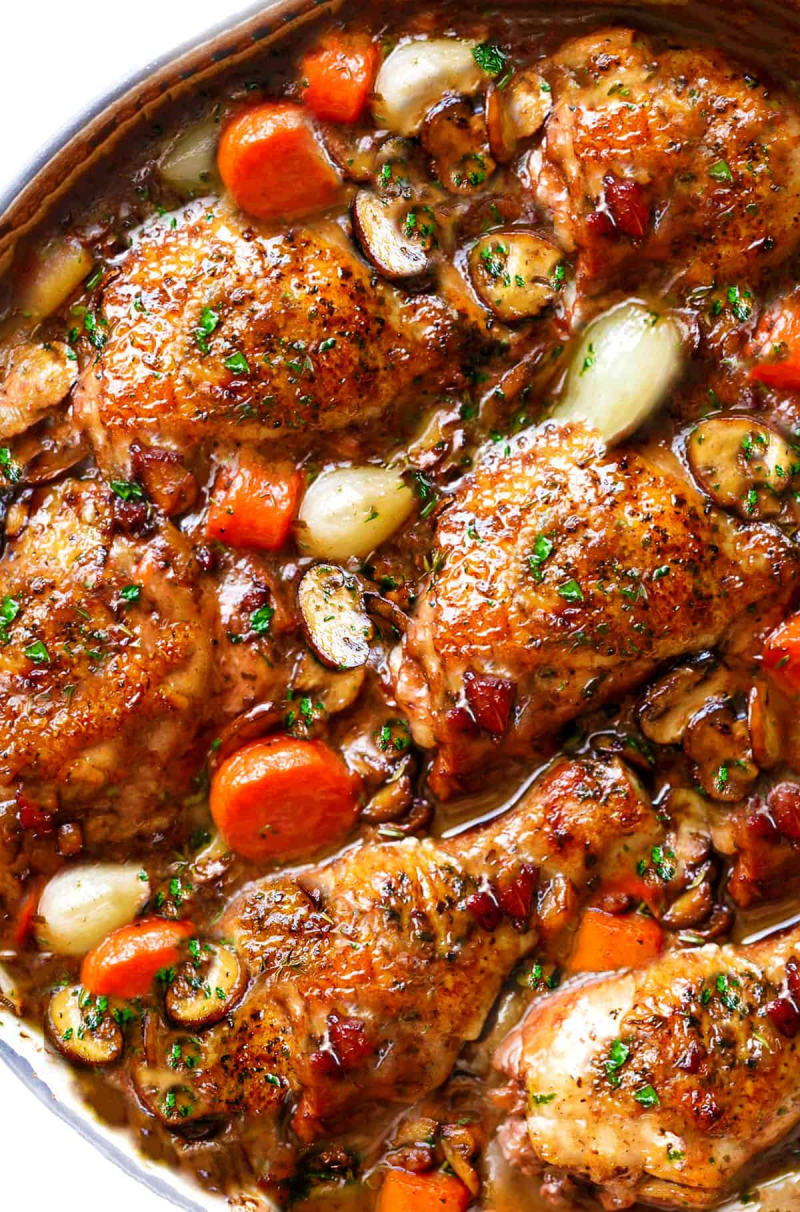
https://www.errenskitchen.com/classic-coq-au-vin/ 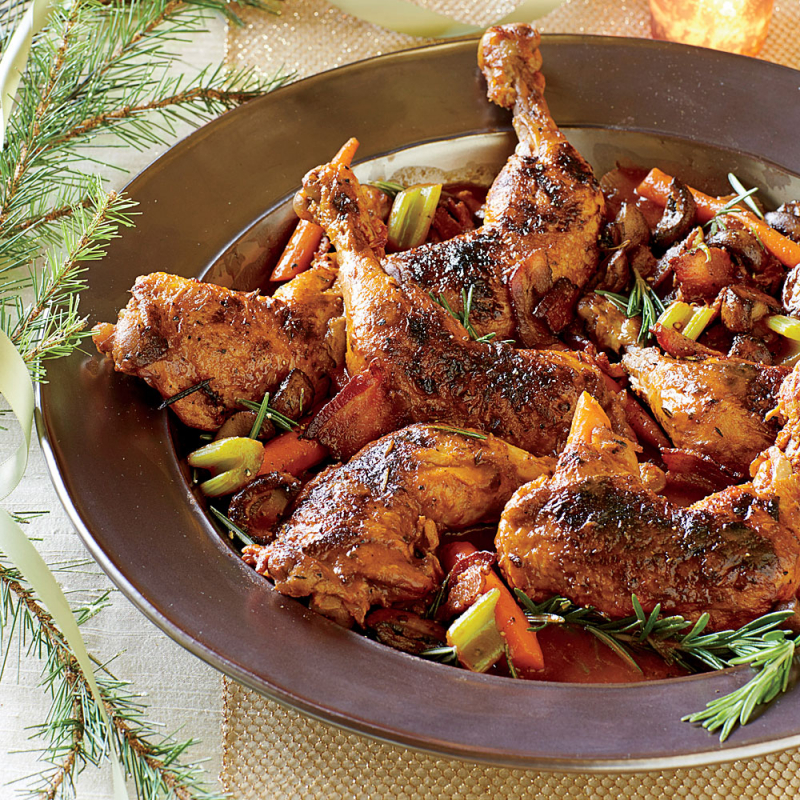
http://www.myrecipes.com -
Cassoulet is a hearty stew made with white beans and meat. The dish is usually made with pork or duck, but it can also be made with sausages, goose, mutton, or whatever else the chef has on hand. This peasant dish is popular in Toulouse, Carcassonne, and Castelnaudary, and it comes from southern France.
The dish's name is derived from the baking pot (cassole) in which it is traditionally prepared. This pot is a common sight in many French homes, demonstrating the popularity of this hearty, rich dish that's ideal for the colder months.
The dish is said to have originated in Castelnaudary and is especially popular in the nearby cities of Toulouse and Carcassonne. It is linked to the region that was once known as Languedoc-Roussillon. Since 1999, a group known as The Grand Brotherhood of the Cassoulet of Castelnaudary (French: La Grande Confrérie du Cassoulet de Castelnaudary) has held annual competitions and fairs featuring cassoulet.
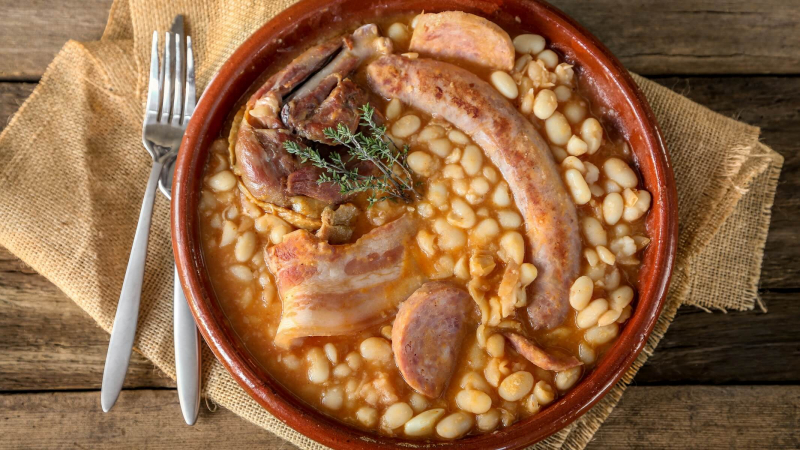
https://blog.goodpairdays.com/ 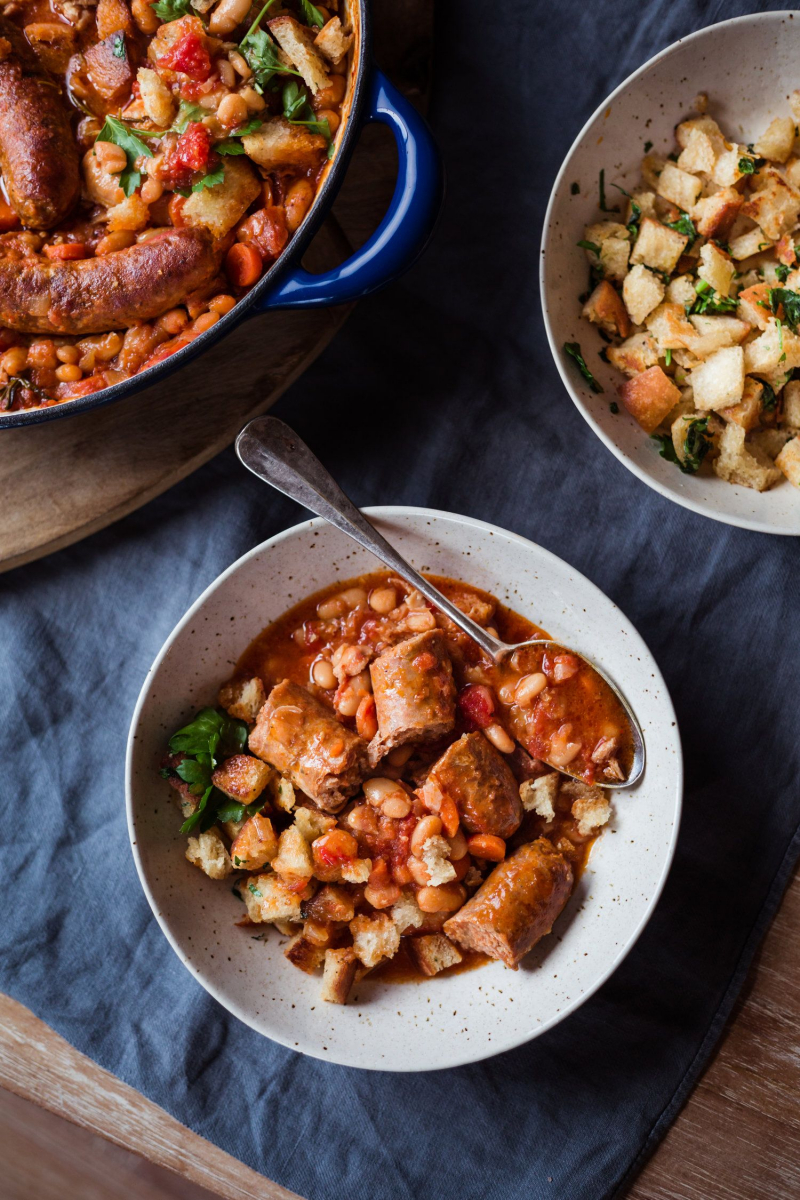
https://www.pinterest.com/ -
Boeuf Bourguignon, a delectable beef stew, pays homage to the prized Charolais cattle of the region. The creamy white Charolais bulls found in the Charolles region of southern Burdundy are used extensively in the making of boeuf bourguignon. They are known for their distinct taste, low fat content, and gentle temperament.
Boeuf bourguignon is one of the most traditional French dishes. The dish comes from the same region as coq au vin – Burgundy in eastern France – and the two dishes have some similarities. Boeuf bourguignon is a stew made with braised beef, beef broth, and seasoned vegetables such as pearl onions and mushrooms braised in red wine.
This recipe, which originated as a peasant dish, is now a standard in French restaurants all over the world. Although some shortcuts can be taken, the cheap cuts of meat are traditionally tenderized in wine for two days to intensify the flavors. The Fête du Charolais, held every August in Burgundy, honors the dish with music and wine.
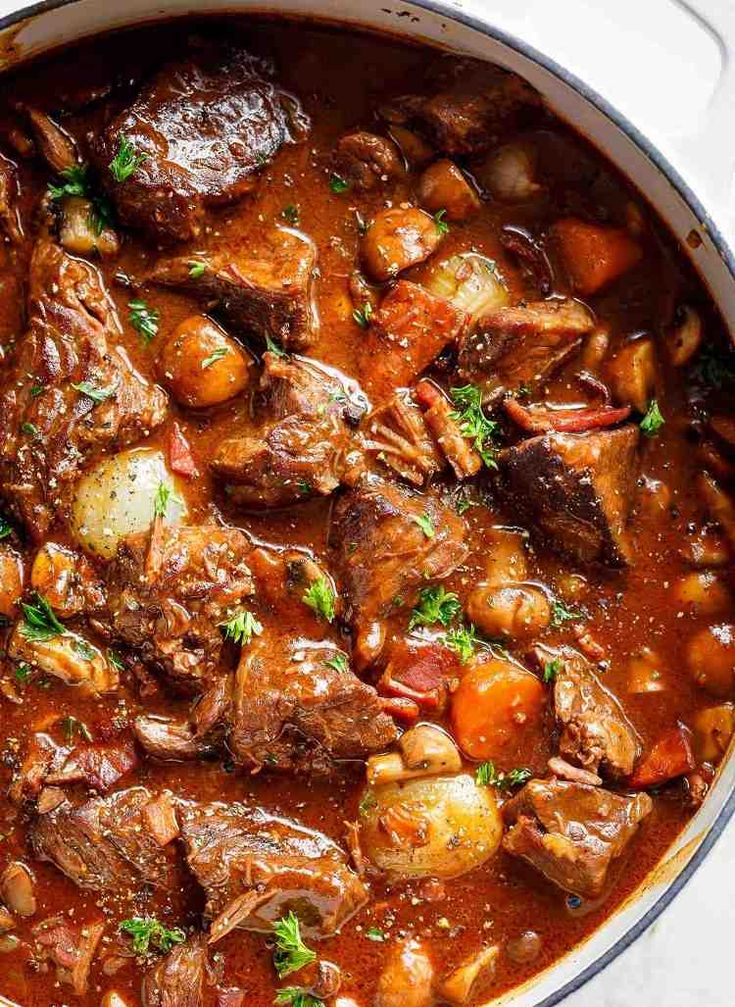
https://www.pinterest.com 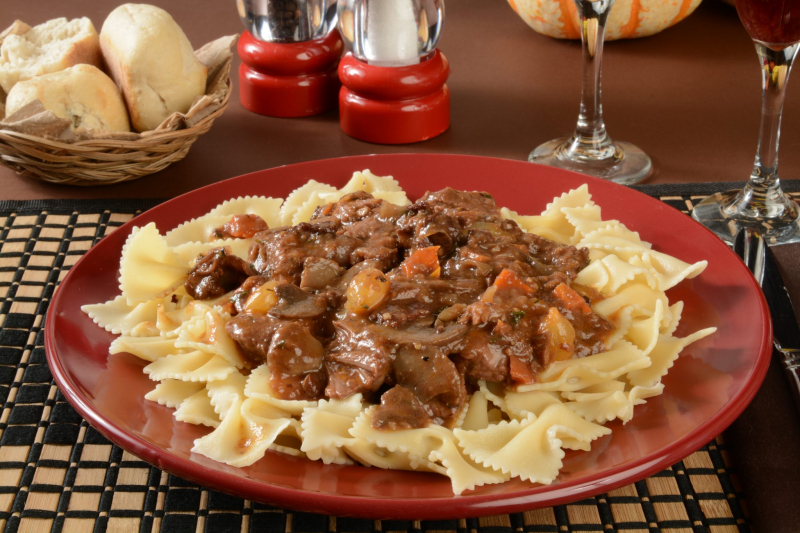
https://totally-food.com/ -
The word soufflé is derived from the French verb 'to blow,' and it refers to a light and airy dessert. The dish dates back to the early 1800s and is now a common sight on dessert menus all over the world. The crisp chocolatey crust allows the creamy chocolate to ooze out for a rich surprise. It does not, however, have to be sweet. In fact, if you're looking for something a little saltier, cheese soufflés are just as good.
Dark chocolate is combined with a creamy egg yolk base and fluffy egg whites in a chocolate soufflé, an exquisite French dessert. It's usually served in small ramekins and should always be lightly baked to keep the middle soft and velvety and the top crunchy and delicious.
The chocolate version, like the other soufflé varieties, is considered technically difficult, but when done correctly, it yields a delightfully delicate sweet treat. Despite the fact that it is not one of the first soufflé versions, which were originally served as savory dishes, it is now one of the most popular versions of this internationally acclaimed dessert.
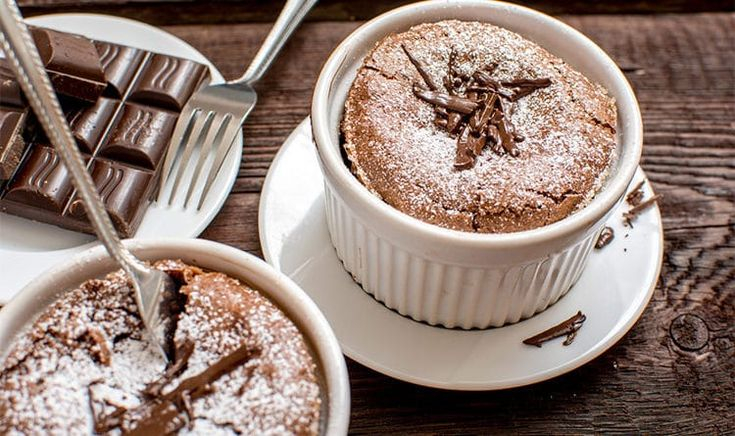
https://www.pinterest.com 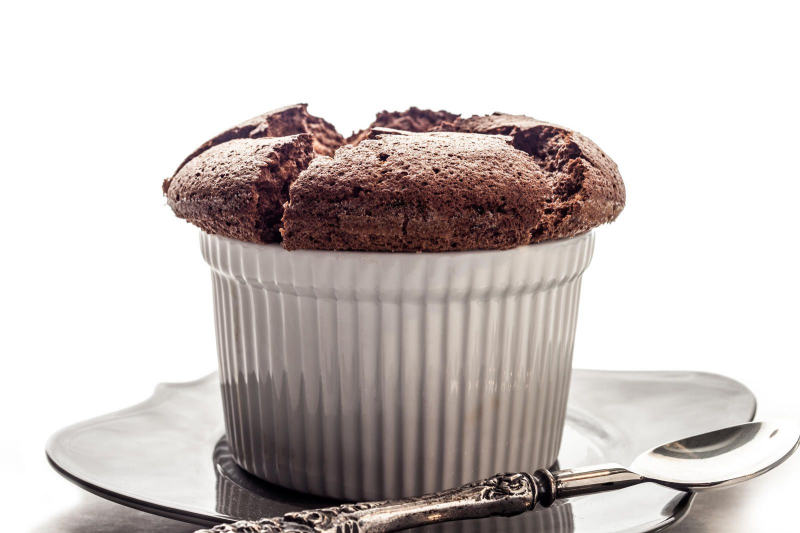
https://www.pinterest.com -
Flamiche is a dish from northern France, near the Belgian border, that means "cake" in Dutch. It looks like a quiche and has a puff pastry crust filled with cheese and vegetables. Leeks and cream are the traditional filling, but there are many variations. Flamiche is also available in a pizza-like version without the pie's top crust. Try the thin crusty pissaladière with anchovies, onions, and olives for a southern French twist.
Puff or shortcrust pastry is used to make Picardy flamiche (flamichepicarde), which is made with the white part of leeks cut into round slices and sweated in butter, crème fraîche, eggs, and salt. It's typically served as an appetizer with a green salad or as a main course with fried potatoes. It's also delicious served cold as an appetizer with a glass of dry white wine.
Flamiche can be made with onions, endives, or maroilles cheese, the latter of which is particularly popular in Nord.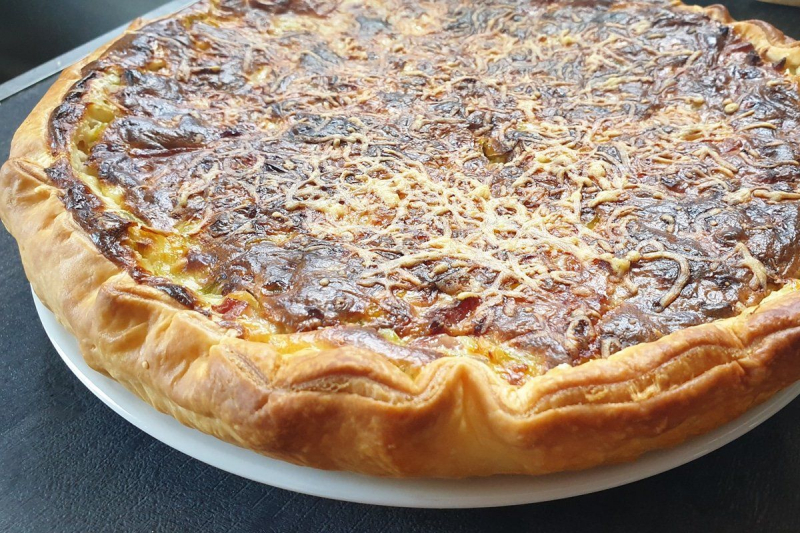
https://in.pinterest.com/ 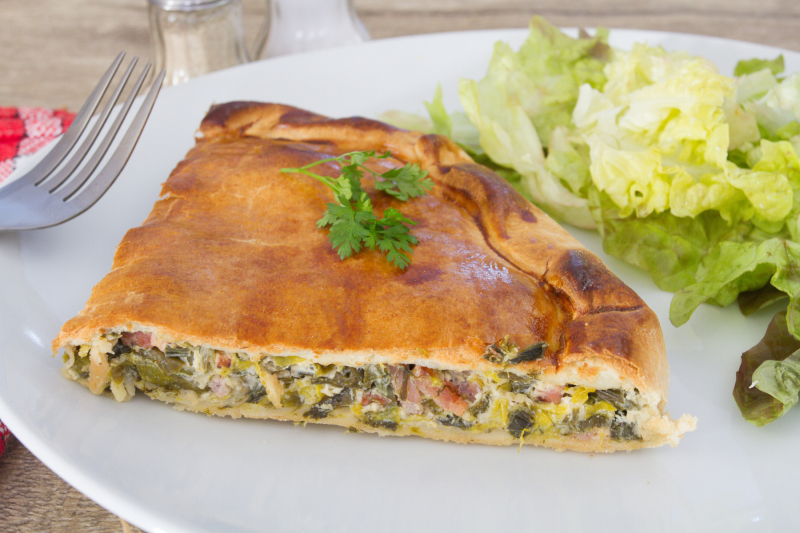
https://www.expatica.com/ -
Confit de canard is a delicious French duck dish, though some chefs use goose or pork instead. It is considered one of the best French dishes. The meat is prepared using ancient preservation techniques and a slow-cooking method (confit).
The duck meat is marinated for 36 hours in salt, garlic, and thyme before being slow-cooked in its own fat at low temperatures. This is a better option than frying. On the side, it's usually served with confit roasted potatoes and garlic. Today, this dish is popular throughout France, but the best variations can be found in the Gascony region.
Confit de Canard is a dish from the French region of Aquitaine. The south west of France is located on the Atlantic coast. Bordeaux is the capital, and Aquitaine is divided into five departments. Confits are essentially a preservation technique. This region's traditional dish is "preserved duck."
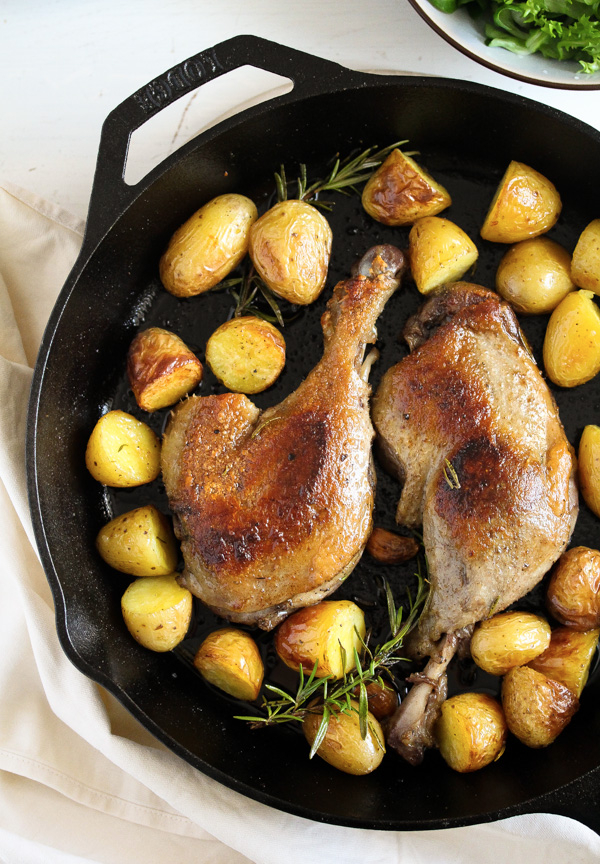
https://in.pinterest.com/ 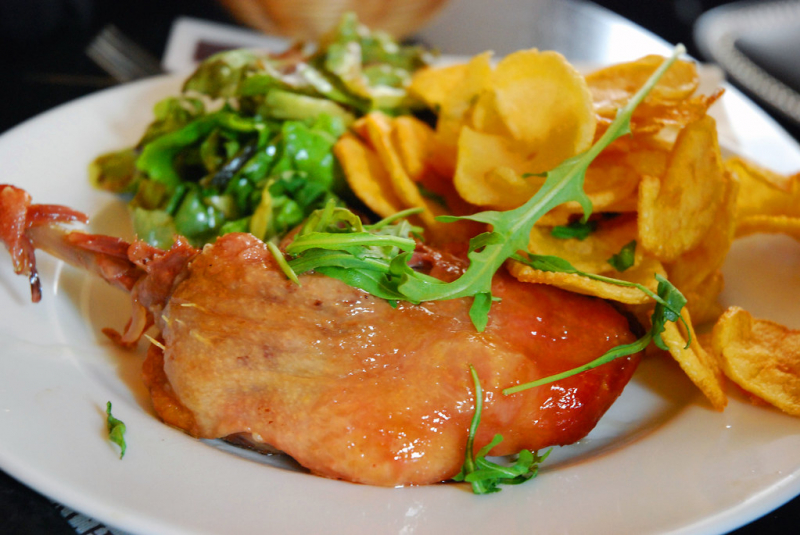
https://www.flickr.com/ -
Salade Niçoise is a traditional French salad from the region of Provence. It's commonly served as a side dish, but it can also be served as a light meal on its own. Lettuce, fresh tomatoes, boiled eggs, tuna (canned or fresh), green beans, Nicoise Cailletier olives, and anchovies make up the salad. There are, however, a plethora of options to choose from. So, if you're having trouble coming up with the perfect summer menu, try Salade Niçoise.
Salade Niçoise, pronounced nee.swaaz, is a popular French salad that typically includes raw produce or vegetables like tomatoes, radish, spring onions, and tender leafy greens, as well as hardboiled eggs, olives, and tuna or anchovies. Everything is slathered in a light, zingy dressing.
Niçoise salad has been around for a long time, and there are so many variations that finding a recipe for the original, true traditional Niçoise salad is difficult.
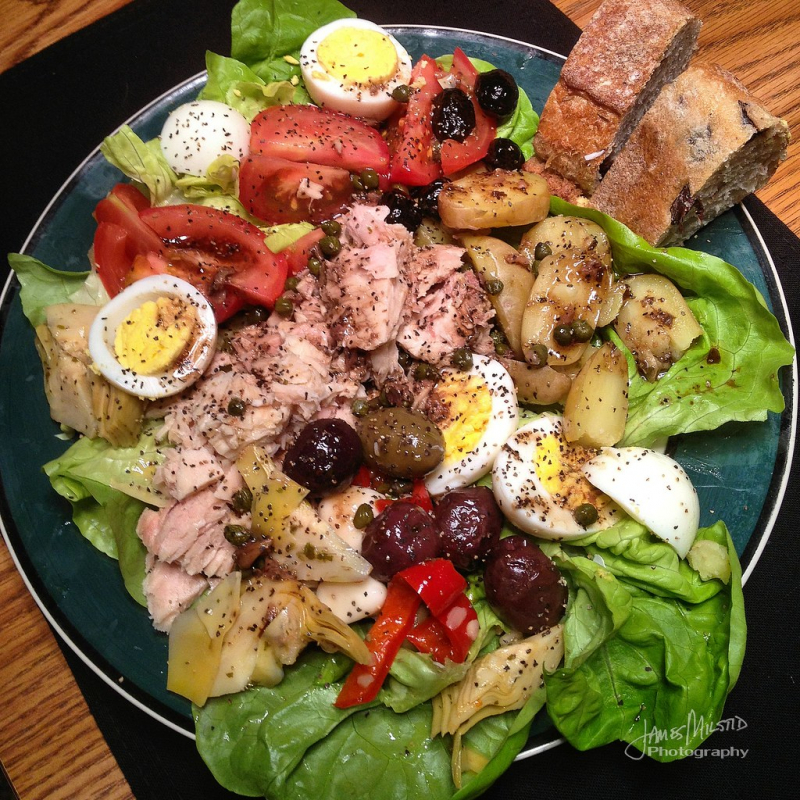
https://snippetsofparis.com/salad-nicoise/ 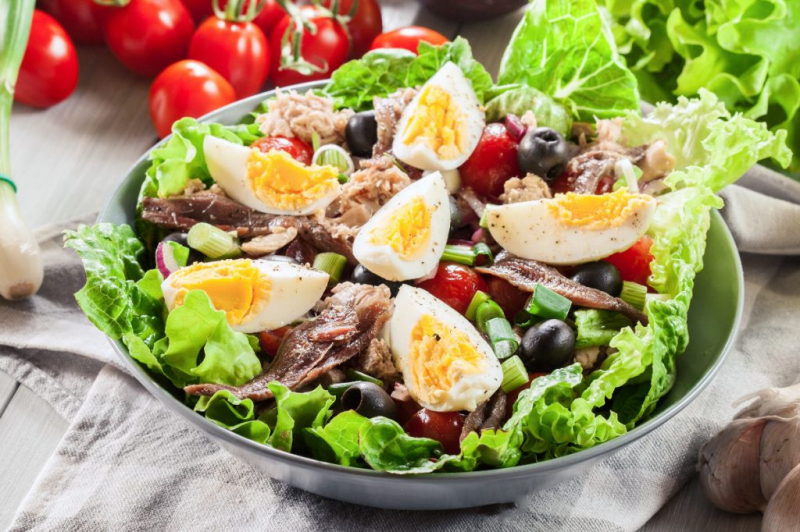
https://www.flickr.com -
Ratatouille isn't just a cute cartoon about a friendly rat; it's also one of France's most famous dishes. The dish, which hails from Provence, involves shallow-frying vegetables before layering them in a casserole dish and baking them in the oven.
For centuries, French chefs have debated whether the vegetables should be cooked first, but the results are delicious no matter how you prepare them. This traditional peasant dish is delicious with red wine and crusty bread as a side dish, appetizer, or main course. Pipérade is a similar Basque dish that typically includes ham and eggs in the stewed vegetable mix.
Ratatouilli is a stewed vegetable dish from the French Provençal region of Nice, also known as ratatouille niçoise. Tomato, garlic, onion, courgette (zucchini), aubergine (eggplant), capsicum (bell pepper), and some combination of leafy green herbs native to the region are common ingredients in recipes and cooking times.
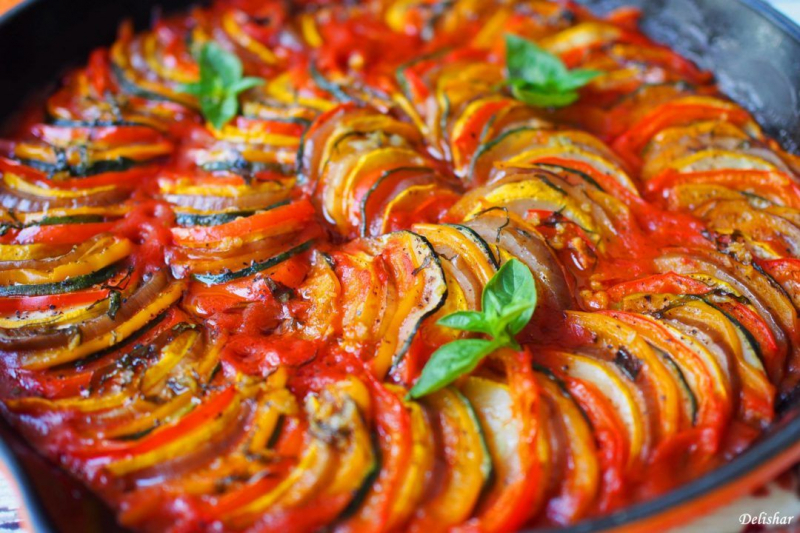
https://in.pinterest.com/ 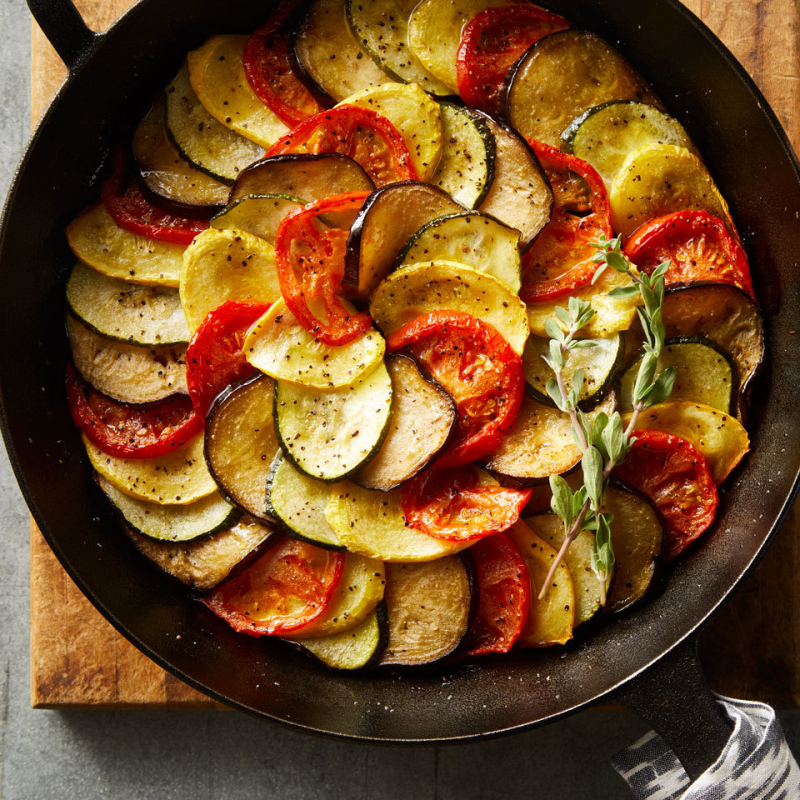
http://www.eatingwell.com/r -
Tarte Tatin is said to have started out as a mistake in the kitchen. Stephanie Tatin, a hotelier, was making a traditional apple pie in 1898 when she accidentally overcooked the apples in sugar and butter. In a rush to save the dessert, she piled the pastry base on top of the charred fruit and baked it. She allegedly served the upside-down tart to her guests at Hôtel Tatin, and it became the hotel's signature dish as a result. This excellent blunder can still be tasted today.
The tarte Tatin is a pastry in which the fruit (usually apples) is caramelized in butter and sugar before the tart is baked, named after the Tatin sisters who invented it and served it as their hotel's signature dish. It originated in France, but has since spread to other countries.
Originally, two regional apple varieties were used to make the tarte Tatin: Reine des Reinettes (Pippins) and Calville. Other varieties, such as Golden Delicious, Granny Smith, Fuji, and Gala, have tended to supplant them over time. Pears, quinces, peaches, pineapple, tomatoes, and other fruits or vegetables, such as onion, can also be used to make Tarte Tatin. Puff or shortcrust pastry should be used to make the Tarte Tatin.
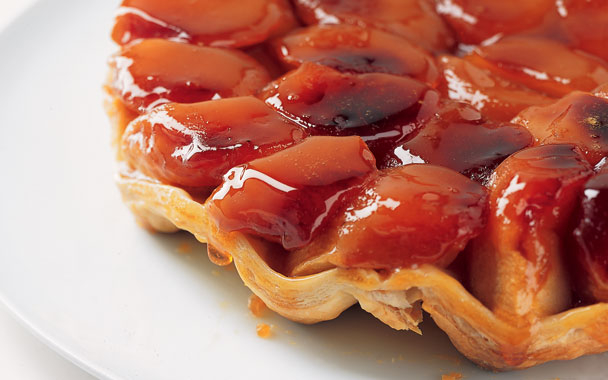
http://skinnymixers.com.au/ 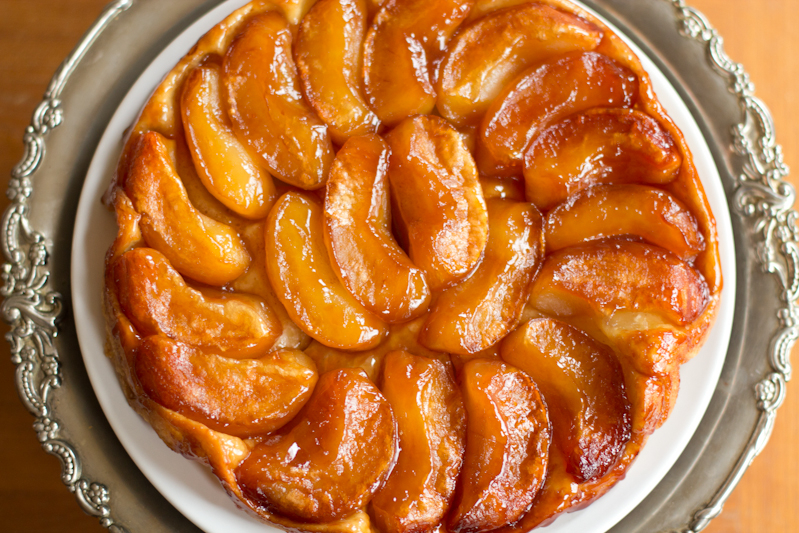
https://blogs.furman.edu/












